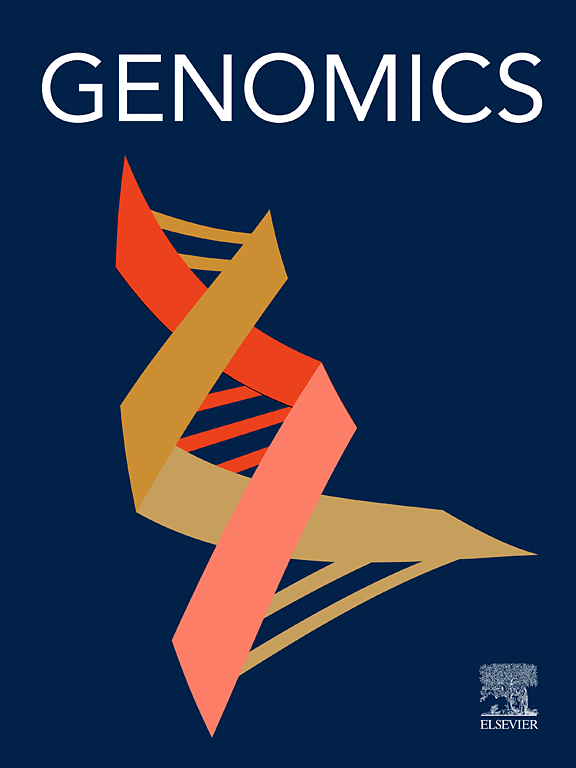Integrated transcriptomic and proteomic analyses revealed molecular mechanisms underlying nutritional changes during seed development of Chenopodium quinoa
IF 3
2区 生物学
Q2 BIOTECHNOLOGY & APPLIED MICROBIOLOGY
引用次数: 0
Abstract
Quinoa (Chenopodium quinoa) is a pseudocereal crop of the Amaranthacea family containing highly nutritious seeds which undergo complex physiological and biochemical changes during their development, resulting in final yield and seed nutritional quality (SN-quality). To obtain new insights into the underlying molecular mechanisms, integrated transcriptomic and proteomic analyses of developing seeds from 7 days after flowering (DAF) to maturation (57 DAF) were conducted. A total of 44,776 genes and 8235 proteins were detected; among them, 4130 genes and 3978 proteins were significantly different in pairwise comparisons of samples at various seed developmental stages. Results showed that genes and proteins associated with pathways of sucrose, fructose, mannose, pentose, glucuronate, starch, amino sugar and nucleotide sugar in carbohydrate metabolism; cyano amino acid, taurine & hypotaurine and storage proteins in amino acid and protein metabolisms; cutin, suberin and wax biosynthesis in lipid metabolism and phenylpropanoid and terpenoid biosynthesis in secondary metabolisms of flavonoids and triterpenoidal saponins play a key role in seed developmental process and SN-quality control. Gene regulatory networks correlated with SN-quality traits identified ABA independent (CqDREB2A, Cyclic dof factor 2 (CqCDF2) and AINTEGUMENTA-like5 (CqAIL5),) as well as dependent (CqABI4 and CqWRKY24) associated transcription factors play dynamic role in quinoa SN-quality control by regulating potential target genes and their encoding proteins related to above-mentioned metabolic pathways. The provided multi-omic data sets presented a dynamic picture regarding the developmental process of quinoa seeds, revealing the temporal specific expression of key candidate genes and proteins and providing the basis for crop improvement.
综合转录组学和蛋白质组学分析揭示了藜麦种子发育过程中营养变化的分子机制
藜麦(Chenopodium Quinoa)是苋科的一种假谷类作物,其种子在发育过程中经历了复杂的生理生化变化,从而导致了最终的产量和种子的营养品质(n -quality)。为了进一步了解其潜在的分子机制,对开花后7天(DAF)至成熟(57 DAF)的种子进行了转录组学和蛋白质组学的综合分析。共检测到44,776个基因和8235个蛋白;其中4130个基因和3978个蛋白在种子发育不同阶段的两两比较中存在显著差异。结果表明,蔗糖、果糖、甘露糖、戊糖、葡萄糖酸盐、淀粉、氨基糖和核苷酸糖等碳水化合物代谢途径相关的基因和蛋白质;氰基氨基酸、牛磺酸;次牛磺酸与储存蛋白质中的氨基酸和蛋白质代谢;脂质代谢中的角质、木质素和蜡质生物合成以及黄酮类和三萜皂苷次生代谢中的苯丙素和萜类生物合成在种子发育过程和籽粒品质控制中起关键作用。经鉴定,ABA独立(CqDREB2A、Cyclic dof factor 2 (CqCDF2)和AINTEGUMENTA-like5 (CqAIL5)、)和依赖(CqABI4和CqWRKY24)相关转录因子通过调控上述代谢途径相关的潜在靶基因及其编码蛋白,在藜麦sn质量调控中发挥动态作用。提供的多组学数据提供了藜麦种子发育过程的动态图景,揭示了关键候选基因和蛋白质的时间特异性表达,为作物改良提供了基础。
本文章由计算机程序翻译,如有差异,请以英文原文为准。
求助全文
约1分钟内获得全文
求助全文
来源期刊

Genomics
生物-生物工程与应用微生物
CiteScore
9.60
自引率
2.30%
发文量
260
审稿时长
60 days
期刊介绍:
Genomics is a forum for describing the development of genome-scale technologies and their application to all areas of biological investigation.
As a journal that has evolved with the field that carries its name, Genomics focuses on the development and application of cutting-edge methods, addressing fundamental questions with potential interest to a wide audience. Our aim is to publish the highest quality research and to provide authors with rapid, fair and accurate review and publication of manuscripts falling within our scope.
 求助内容:
求助内容: 应助结果提醒方式:
应助结果提醒方式:


